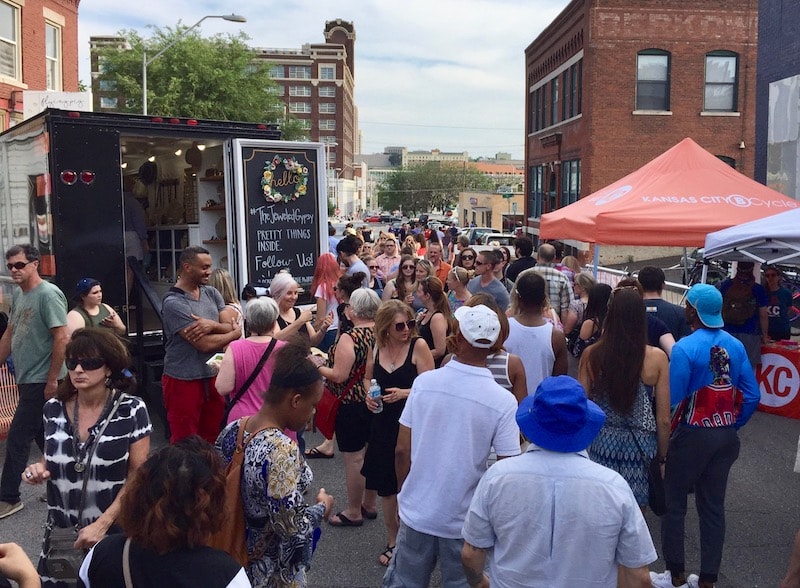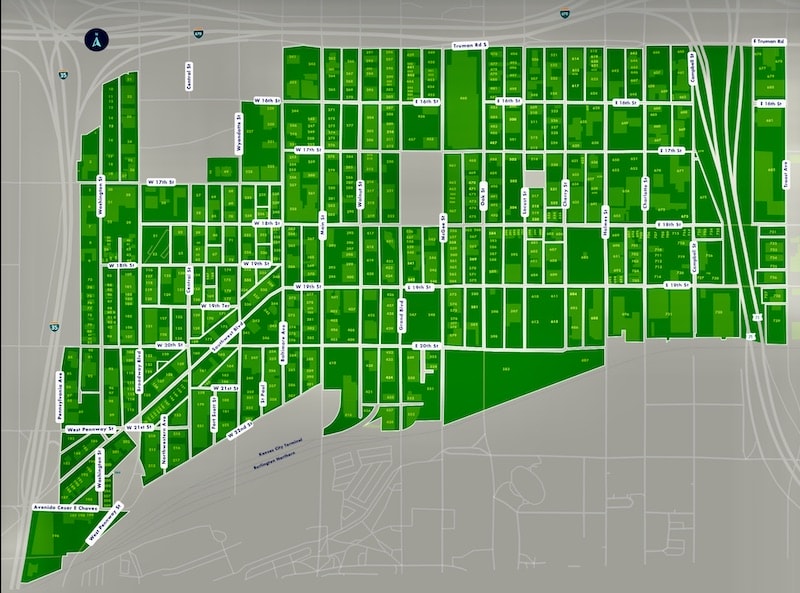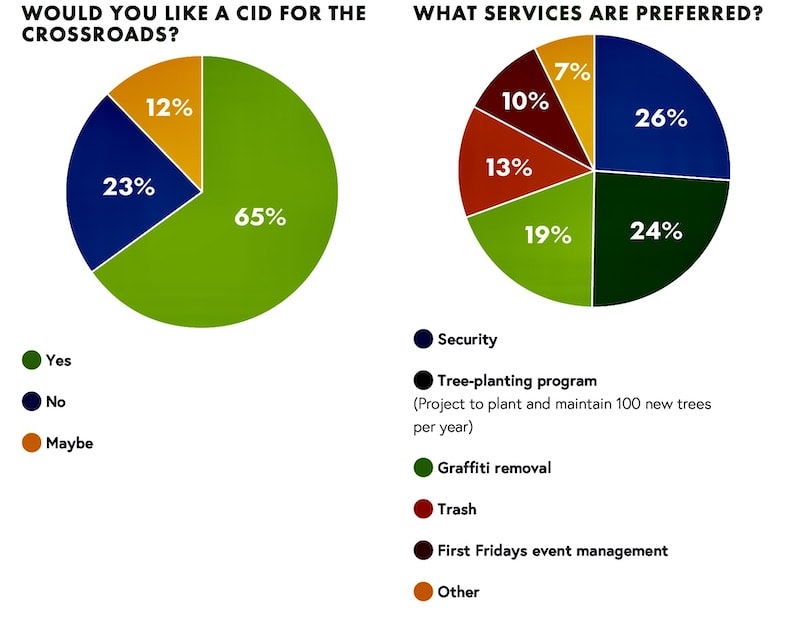Crossroads Pursues Improvement District to Improve Security, Landscaping

Published July 25th, 2023 at 11:30 AM
By Kevin Collison
The Crossroads Community Association has launched a long-anticipated drive to establish a community improvement district that’s intended to increase security, improve landscaping and reduce trash and graffiti in the popular downtown neighborhood.
The effort comes after many years of spirited debate and signals how the district of older industrial buildings has evolved from its early years as an artists’ haven to what’s now a significant downtown residential and entertainment area.
“One of the biggest motivations behind it is how the demographics kept changing in the neighborhood,” said Jeff Owens, chairman of the proposed Crossroads Community Improvement District. “A lot of people want it now.”
A recent survey found 65 percent of respondents supported creating a Crossroads CID. The biggest goals for a district were improving security, 26 percent, and planting more trees, 24 percent.
The proposed CID would hire contract employees including a security officer and vehicle that would be on duty 12 hours daily and on-call at night. The Crossroads has had a history of property crimes with Kansas City police often being an ineffective deterrent.

The proposed CID would stretch from I-35 on the west to Troost on the east, from the South Loop to the KC Terminal Railway corridor. (Map from Crossroads Community Association)
The security officer also would work with local social service agencies to address problems with homeless encampments. The CID also would install and maintain 50 trash receptacles throughout the district and remove graffiti within 48 hours of notification.
Another goal is to plant and maintain at 100 new trees annually in the district, a program already begun by the Crossroads Association. It also calls for doing a better job of mowing and weeding the area.
The plan also calls for the CID to manage First Fridays, a monthly, homegrown event that attracts thousands of visitors to art galleries and other attractions in the Crossroads that has received little support from the city.
The boundaries of the proposed CID stretch from I-35 on the west to Troost on the east, and from the I-670/South Loop Freeway on the north to the Kansas City Terminal railroad tracks on the south.
To finance the improvement district, the plan calls for a property tax surcharge ranging from $100 a year for a small, undeveloped lot, to $1,200 for buildings between 10,000-40,000 square feet, and $1,800 for buildings over 40,000 square feet.

Apartment projects including REVERB at 19th and Walnut increasingly have made Crossroads a residential neighborhood.
A one-half cent sales tax also would be charged on purchases in the district. When fully implemented over a two-year period, the revenue sources are expected to generate $1.2 million in annual revenues for the CID operations.
To move forward with creating the CID, backers must circulate a petition that obtains 51 percent support from voters living in the district, and from property owners holding 51 percent of the value.
A Crossroads CID would follow a similar pattern of other city neighborhoods and business districts that have established districts to improve security and the appearance of their areas.
The Downtown Council, an organization of business and property owners, already runs a CID employing the familiar “bumblebees” in their black and yellow uniforms to improve security and maintenance in the central business district.
That CID also has a contract to provide similar services for the River Market neighborhood and Port KC properties on the riverfront.

A recent survey found strong support for creating a community improvement district. (Charts from Crossroads Community Association)
Owens said the Crossroads didn’t want to simply join the Downtown CID, citing its higher administrative costs.
He said the CID operated by Midtown KC Now, which operates in the Main Street corridor from roughly Penn Valley Park to the Plaza, was a better model.
“It enables us to put more money into services and spend less on administration,” he said.
Still, in keeping with its tradition of being an eclectic part of greater downtown, Owens said joining Midtown KC’s CID wasn’t an option either.
“The biggest reason is the Crossroads is a unique and incredible diverse community,” he said. “We’ll be able to guide services better than somebody not in tune to everybody’s needs here.”
In addition to Owens, board members for the proposed CID are Leslie Tomlinson, co-chair, and Stephen Powell, Rick Usher, Rasool Ahmed, Elizabeth Rosin, Lara Gray, Alex Proffer and Spencer Sight.


